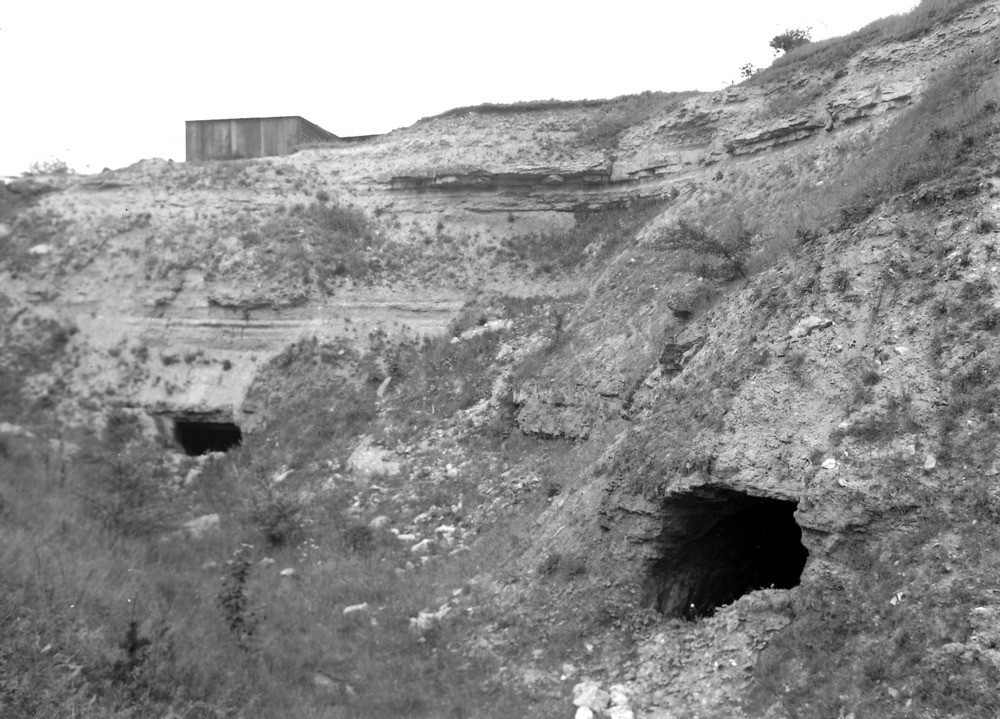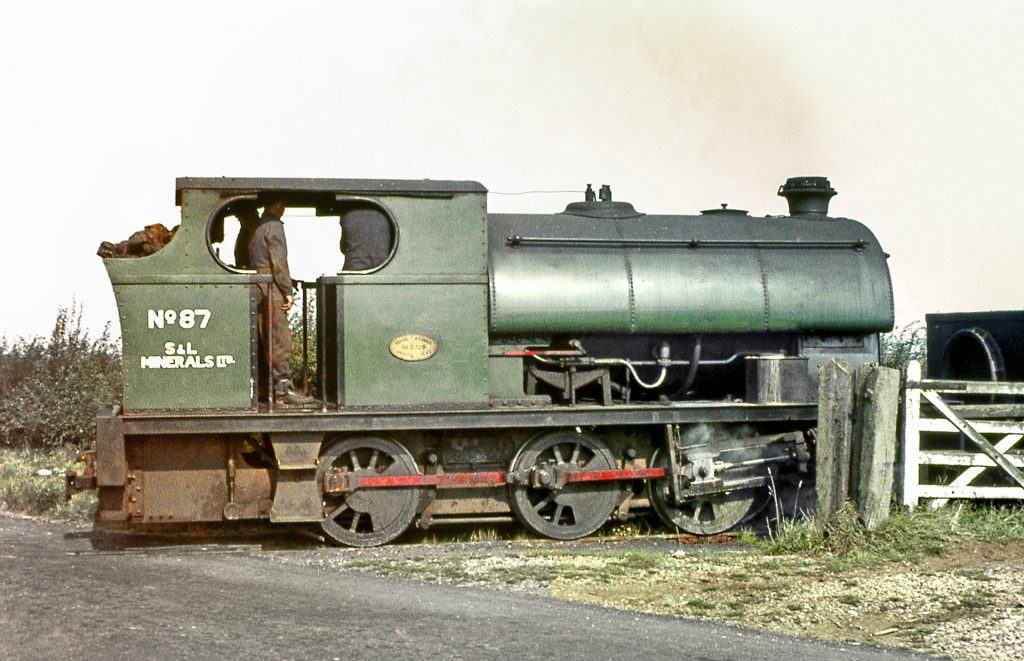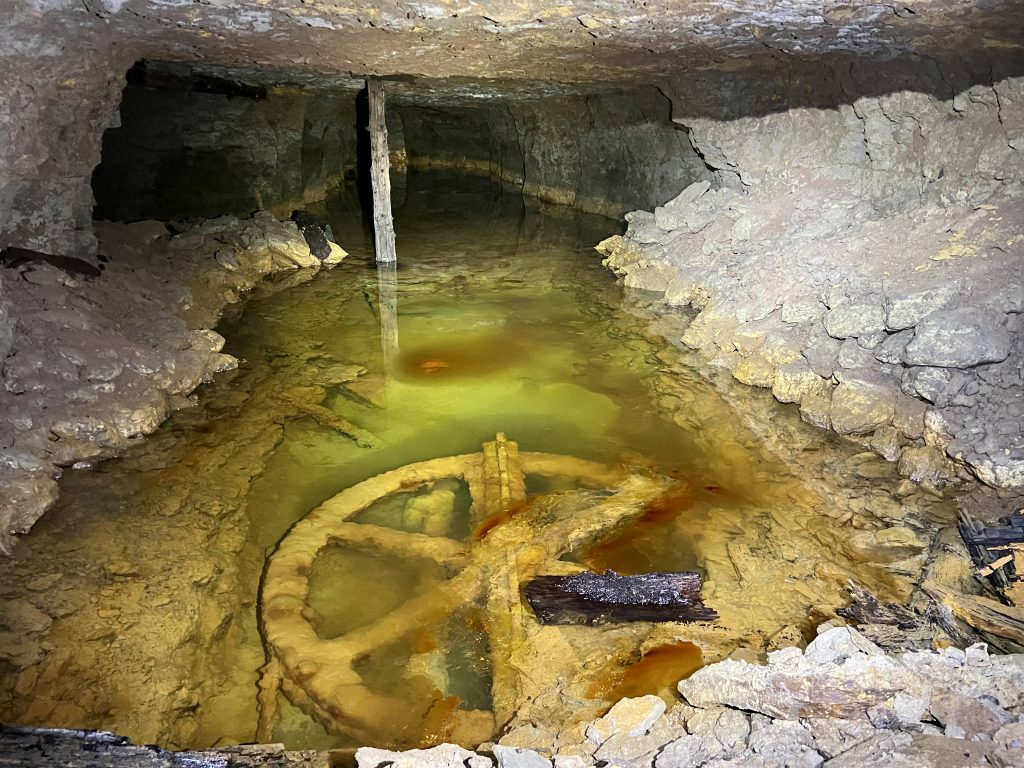Water Neilson, a Scot as his name implies owned land at Finedon and started up a business as an iron ore proprietor. He started surface mining in 1879; this would last for some 30 years . All of the won iron ore would go on a tramway system which was 2 miles long, this used a 3/4” rope, ending at Neilsons Sidings which was at The Midland Mailway. His system was powered by a steam engine at the lower terminus.
Once the ore had arrived it was removed by hand from old wooden carts to the calcining heaps. The new side tipper carts could tip directly onto this heap which saved time and labour.
Neilson soon started quarrying limestone from his more easterly properties, and some iron stone his open cast working continued until 1908 when heavy overburden was encountered due to geological faults.
The first mention of mining at Thingdon is now encountered, in 1908 a series of experimental headings were driven to check the suitability for mining these headings proved suitable, so Neilson gave the go ahead to start mining.
Neilson did not have any experience in mining which soon became apparent as within its first year mining had been put on hold. Meanwhile very close by the neighbouring Glebe Mine boundary was creeping closer and closer to Neilson’s boundary, this ended up taking over Neilson’s mine with both mines being run by The Wellingborough Iron Ore Company.
Sadly today the only remains of Neilsons work are the local road names Kenmuir Road & Summerlee which bear the Scottish origin he brought with him. Once The Wellingborough Iron Ore Company had taken over they put a German man in charge who had experience as a mining engineer. His name was Carlsteiner. Carlsteiner used Neilson’s tramway for the mines entire life following its exact route down to the 1m gauge line at Midland rail. In the 1970s sadly all of this system was removed.
It was not until 1920 that in writing all the exchanges had taken place, The Wellingborough Iron Ore Company finally owning the Glebe & Thingdon mines. It is suspected that many leases took place in before this. In 1923 both mines met to create one large set of pillar and stall workings, from now on the mine was to be called Thingdon mine the traditional word for Finedon. The name Glebe would be forgotten in history.
We have a first hand account from a Mr A H Wells who had worked in the mines since 1908. In 1923 there were 75 groups of men working in the mine with 2 per group; these groups were served by 14 horses. There were soon to be many updates in the mine, in the former Glebe mine near the surface a steam winding engine was installed for a main and tail haulage system.
In 1933 a large geological survey was done of the mine and the surrounding area which showed a large amount of profitable ore was awaiting to be removed.
After the results came through The Wellingborough Iron Ore Company purchased a new lease for 60 years ! After this large modernisation happened, a new track was to be laid to form a new adit for the Ruston Hornsby locomotive to enter the mine. This still used the 2ft 4” system installed inside the mine. Its purpose was to speed up the movement of the 1928 steel tubs, the Ruston Hornsby’s moved the tubs to the electrically powered tippler docks which emptied them into the 1m gauge wagons.
If the locomotives proved too costly, planning was in place for an electrical worked rope endless haulage system but this was never installed. The history is very scarce from 1933 onwards, all we know is mining at Thingdon continued strongly until the later war years.
The first blow was when the demand for iron ore fell in 1944/45, as well the introduction of large stripping machinery got ever more common.
Thingdon was unable to compete with the modern surface mining method costs and with a low demand for ore the mine was finally closed.

The former Glebe Mine entrances April 1945, photo from BGS archive

photo by Gordon Edgar
A sinkhole opened into Thingdon mine in November 2022 – more information here.

The team who explored the sinkhole , sent us this image of the Endless haulage system, still installed in the underground workings .
Photo- property of Nenevalleymines
